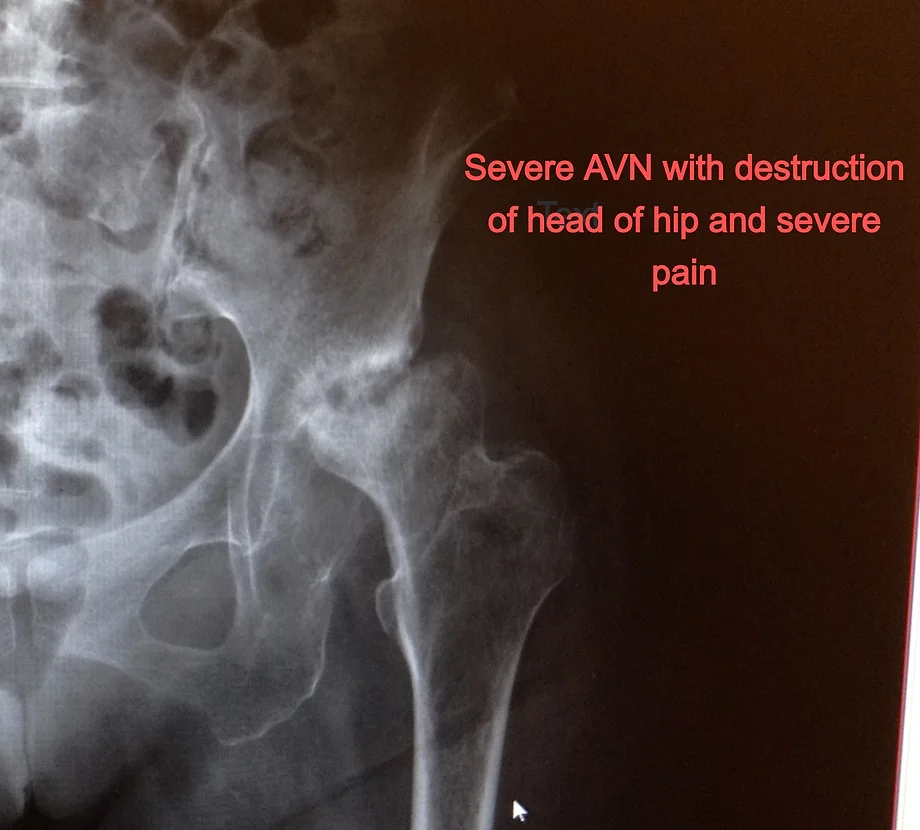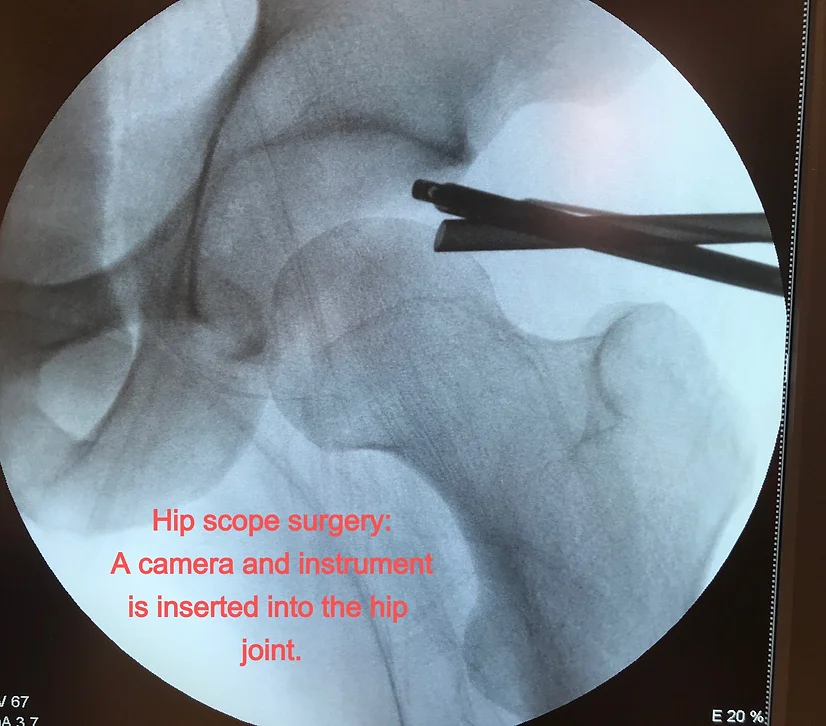Hip Specialist Services in Singapore

Hip pain can significantly impact your mobility and quality of life, making everyday activities a challenge. If you’re experiencing persistent hip pain, seeking specialised care from a hip pain specialist is essential. They can provide an accurate diagnosis and treatment, whether your pain stems from osteoarthritis, hip labral tears, bursitis, or other conditions. With expertise in both non-surgical and surgical options, a skilled hip pain doctor in Singapore can offer comprehensive care tailored to your needs, helping you to potentially regain pain-free movement and improve your overall quality of life.

When to See a Hip Pain Specialist in Singapore
Your hips are essential for a wide range of movements, from walking and running to simply getting out of a chair. When pain interferes with your ability to move freely and comfortably, it is time to seek expert care. Consulting a hip pain specialist in Singapore is crucial if you are concerned about the underlying cause of your hip pain or if conservative measures have not provided relief.
Common symptoms that indicate the need for specialist care include:
- Persistent hip pain lasting more than a few weeks
- Pain radiating to the thigh, groin, or lower back
- Stiffness or reduced range of motion in the hip
- Swelling or tenderness around the hip joint
- Pain that worsens during activities or at night
- Difficulty walking or bearing weight on the hip

Common Hip Conditions
Hip Osteoarthritis
Osteoarthritis is a degenerative joint disease that commonly affects the hip. It occurs when the protective cartilage that cushions the bones within the hip joint wears down, leading to pain, stiffness, and limited mobility. This wear and tear can come about because of aging, previous injury to the hip joint, or develop due to complications of conditions like Avascular Necrosis (AVN) or Femoral-Acetabular Impingement (FAI).
Avascular Necrosis (AVN)
AVN is a condition of the hip where the blood supply to the hip bone is disrupted, causing bone tissue to gradually die off. AVN can happen in people in their 30s to 50s. The risk factors are smoking, excessive alcohol use, long-term steroid use, and fracture injuries of the hip.
Hip Labral Tears
The labrum is a ring of cartilage that lines the rim of the hip socket, providing stability and cushioning to the joint. Hip labral tears occur when this cartilage is damaged, often due to repetitive motions, trauma, or underlying hip conditions. These tears can cause pain, clicking or catching sensations in the hip, and a feeling of instability. Hip labral tears commonly occur in people in their 20s to 40s, and a person need not be very physically active to sustain a hip labral tear.
Trochanteric Bursitis
Bursae are small, fluid-filled sacs that cushion and reduce friction between bones, tendons, and muscles near joints. Trochanteric bursitis is a condition characterised by inflammation of the bursa located on the outer side of the hip. This can cause pain, tenderness, and swelling in the hip area, particularly when lying on the affected side or during activities that involve repetitive hip movements, such as running or cycling.
Hip Impingement (FAI)
Femoroacetabular impingement (FAI) is a condition where there is abnormal contact between the ball (femoral head) and socket (acetabulum) of the hip joint. This can lead to pain, especially during movements that involve bending or rotating the hip. FAI often affects young and active individuals, causing discomfort during sports or daily activities.
Hip Fractures
Hip fractures are a serious injury, particularly common in older adults with osteoporosis, who can sustain such fractures from a simple fall on the buttocks These fractures typically occur in the upper part of the femur (thighbone) and often require surgical intervention to stabilise the bone and promote healing.
Tendon Injuries
Tendons are strong, fibrous cords that connect muscles to bones. Tendon injuries around the hip can involve strains, tears, or inflammation, leading to pain, weakness, and limited movement. These injuries can occur due to overuse, sudden movements, or trauma.

Diagnosis of Hip Pain
Accurate diagnosis is essential for developing a treatment plan for hip pain. Your hip pain doctor in Singapore will utilise a comprehensive approach to evaluate your condition, including a detailed medical history, physical examination, and advanced imaging techniques.
Diagnostic methods for assessing hip conditions include:
Physical Examination:
A thorough physical examination helps assess your range of motion, muscle strength, and identify specific movements or positions that trigger your hip pain.
X-rays:
X-rays provide images of the bones, helping to identify fractures, arthritis, or structural abnormalities in the hip joint.
MRI:
Magnetic resonance imaging (MRI) creates detailed images of soft tissues, such as the labrum, tendons, and cartilage, aiding in the diagnosis of conditions like labral tears or cartilage damage.
Ultrasound:
Ultrasound imaging uses sound waves to visualise tendons, muscles, and bursae in real-time, helping to diagnose conditions like bursitis or tendonitis.
CT Scans:
Computed tomography (CT) scans provide detailed cross-sectional images of the hip joint, allowing for a comprehensive assessment of bone structure and alignment.

Non-Surgical Hip Pain Treatments
Many cases of hip pain in Singapore can be effectively managed with non-surgical treatments. To address your specific needs, our hip pain specialist will develop a personalised plan based on your diagnosis and individual circumstances.
Overview of conservative treatment options:
Physiotherapy:
Physiotherapy plays a vital role in strengthening the muscles around the hip, improving flexibility, and restoring normal movement patterns.
Medications:
Pain medications, such as non-steroidal anti-inflammatory drugs (NSAIDs), can help manage pain and inflammation.
Steroid Injections:
Corticosteroid injections can be administered to reduce inflammation and provide pain relief in specific areas of the hip.
Hyaluronic Acid Injections:
Hyaluronic acid injections can help lubricate the hip joint, reducing friction and improving mobility.
Lifestyle Modifications:
Maintaining a healthy weight, engaging in low-impact exercises, and avoiding activities that aggravate your pain can help manage your condition.
Assistive Devices:
Using canes or walkers can reduce strain on the hip and improve stability while walking.


Advanced Surgical Solutions
When non-surgical treatments are insufficient or the hip condition is severe, surgical intervention may be necessary to alleviate pain and restore function.
When surgery is necessary for severe or persistent conditions:
Hip Arthroscopy:
Hip arthroscopy is a minimally invasive procedure that uses small incisions and tiny instruments to repair labral tears, remove damaged cartilage, or address other hip joint problems.
Total Hip Replacement:
Total hip replacement involves replacing the damaged hip joint with an artificial implant, providing significant pain relief and improved mobility.
Hip Resurfacing Surgery:
Hip resurfacing surgery involves replacing the damaged surfaces of the hip joint with metal implants. This procedure preserves more of the natural bone compared to total hip replacement and is often considered for younger, active patients.
Fracture Fixation Surgery:
Hip fracture treatment often involves inserting screws, plates, or rods to stabilise the bone and promote healing.
Tendon Repairs:
Surgical repair of damaged tendons around the hip may be required to restore function and alleviate pain.
Recovery and Rehabilitation for Hip Pain
Whether you undergo non-surgical or surgical treatment for your hip pain, a comprehensive rehabilitation programme is important for optimal recovery.
Tips on recovery:
Regular Low-Impact Exercises:
Engaging in regular low-impact exercises, such as swimming, cycling, or walking, can strengthen the muscles around the hip and improve joint health.
Maintaining a Healthy Weight:
Maintaining a healthy weight reduces stress on the hip joints, lowering the risk of developing osteoarthritis or other hip conditions.
Stretching Routines:
Regular stretching can improve flexibility and range of motion in the hip joint, reducing the risk of injuries.
Avoiding Prolonged Sitting or Poor Posture:
Prolonged sitting or poor posture can contribute to hip stiffness and pain. It is essential to maintain good posture and take breaks to move around throughout the day.
Wearing Proper Footwear:
Wearing supportive footwear with good shock absorption can help protect your hips from excessive impact during activities.
Preventing Hip Pain and Injuries
Taking proactive steps to maintain the health of your hips is a wise investment in your long-term well-being. By prioritising hip health, you can significantly reduce your risk of experiencing hip pain and injuries, allowing you to stay active and mobile throughout your life.
Tips for maintaining hip health:
Post-treatment Physiotherapy:
Physiotherapy is an essential part of hip pain recovery. It involves structured exercise programmes and manual therapy techniques that aim to help you regain strength and flexibility, restore your hip’s range of motion, and improve your overall mobility.
Recovery Timelines Based on Treatment Type:
It is important to have realistic expectations about your recovery time. This will vary depending on the type of treatment you receive, the severity of your condition, and your individual healing process. Discuss your anticipated recovery timeline with our hip pain specialist so you can plan accordingly.
Gradual Return to Activities and Strengthening Exercises:
Ease back into your normal activities gradually. Start with gentle movements and exercises, and slowly increase the intensity and duration as your hip heals and strengthens. This progressive approach is crucial to avoid re-injury and ensure long-term success.
Choosing the Right Hip Pain Specialist
Selecting the right hip pain doctor in Singapore is crucial for receiving the best possible care. When making your choice, consider factors such as experience, expertise, access to advanced technology, and a patient-centric and personalised approach.
At Centurion Orthopaedic Centre, our hip pain specialists have extensive experience in treating a wide range of hip conditions, from osteoarthritis and labral tears to fractures and tendon injuries. They are skilled in both non-surgical and advanced surgical treatments, offering comprehensive options to address your specific needs. Furthermore, we adopt a patient-centric approach, with a focus on personalised treatment plans and clear communication, to ensure a positive patient experience and the best possible outcomes.
Frequently Asked Questions About Hip Pain Treatment
How long does it take to recover from hip replacement surgery?
Recovery time varies depending on individual factors and the hip surgical approach. You can typically expect a hospital stay of a few days, followed by outpatient physiotherapy treatment. Full recovery, including regaining strength and mobility, may range from just 6 weeks to several months. Your surgeon will provide a more specific timeline based on your individual circumstances.
What is the cost of hip pain treatment in Singapore?
Costs vary based on the type of treatment (non-surgical vs. surgical), complexity of the condition, choice of hospital and surgeon, and insurance coverage. Non-surgical options are generally less expensive. Discuss the issue costs with our hip pain specialist to understand more.
Is hip surgery claimable under Medisave or insurance?
Generally, procedures or surgeries performed in the hospital are eligible for claims using Hospitalisation insurance plans. However, the exact eligibility does depend on various factors, including the type of procedure, your insurance policy terms, and the hospital where the surgery is performed. At Centurion, we are experienced in helping our patients check on coverage and obtaining the necessary Pre-Authorisations or Letters of Guarantee before the treatment is instituted.
Contact Us
For expert guidance and personalized care, reach out to us—your first step towards a pain-free life with Centurion Orthopaedic Centre.
38 Irrawaddy Rd, #07-40 Mount Elizabeth Novena Hospital Specialist Centre, Novena, Singapore 329563
We are a 3-min walk from Novena MRT Station. Take Exit A from the station.
WhatsApp to book Appointment:
+65 9623 7153 1 Farrer Park Station Road, #14-09/10 Connexion, Singapore 217562
WhatsApp to book Appointment:
+65 9723 3741 Contact Information
38 Irrawaddy Rd, #07-40 Mount Elizabeth Novena Hospital Specialist Centre, Novena, Singapore 329563
We are a 3-min walk from Novena MRT Station. Take Exit A from the station.
Opening Hours
Mon-Fri: 9am to 6pm
Sat: 9am to 1pm
Emergency consults, Call/Text/WhatsApp: 9623 7153
Please submit your inquiry in English or Mandarin using the form below. We will respond to your query as soon as possible.

Services
Medisave / Insurances
Treatments
Ankle Sprain & Treatment
Cartilage Repair Treatment
Bone Fracture Treatment
Alternatives to Knee Replacement
Knee Replacement Surgery
ACL Reconstruction Surgery
Knee Cartilage/Meniscus Tear Injury
Heel Spur Treatment
Hip Replacement Surgery
Hip Scope Surgery
Shoulder Scope Surgery
Ankle Ligament Surgery
Spinal Injection Therapy
Steroid Injection
Patient Resources


